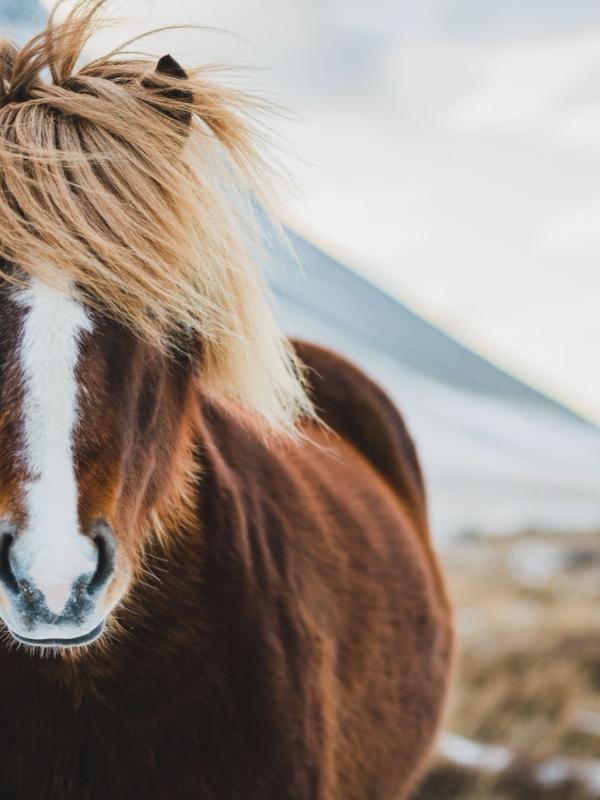
From Puffins to Reindeer: Iceland's Fascinating Animals
Back in the 9th century, there was only one type of land mammal in Iceland. The rest of the fauna were either birds or marine wildlife.
Fast-forward to the 21st century - the island has countless animals adapting to the harsh conditions. Unlike its Arctic neighbors with dangerous bears and wolves, animals in Iceland are much friendlier, cuter, and more captivating to watch.
If you’re wondering what animals you can expect to see in Iceland, sit tight, as I’ll share that and where you can find them.
Wild Animals in Iceland
Iceland might not have large predators or big land mammals, but the ones that do live here are pretty interesting. Over time, they’ve adapted to the island’s tough conditions, from freezing winters to volcanic landscapes. Some, like the Arctic fox, have been around since the Ice Age, while others, like reindeer, were brought here by people. Here’s a look at some of Iceland’s wild animals.
Arctic Foxes
These are the land mammals I was talking about in the introduction.
After walking over sea ice to the island during the ice age, Arctic foxes found themselves stranded after the ice melted. However, these rather adaptable creatures – also known as polar, snow, or white foxes – managed to survive the barely unlivable conditions by feeding on berries, invertebrates, birds, and eggs.
When humans arrived, they hunted foxes for their fur, even developing fur farms that still exist today. Although hunting disrupted the fox population, human arrival provided more food for them in the form of food waste, lambs, and rodents, ensuring their survival.
If you visit Iceland today, you’ll find that the Arctic foxes come in two color morphs – blue and white. Blue foxes don’t change coat color, while the white ones change between seasons, going from white in the winter to white and brown in the summer.
You'll have to travel to the Arctic Fox Center in Súðavík or the Westfjords in the Hornstrandir Nature Reserve to see these beauties.
Artic Fox can be found at: Súðavík, Thorsmork and Hornstrandir.
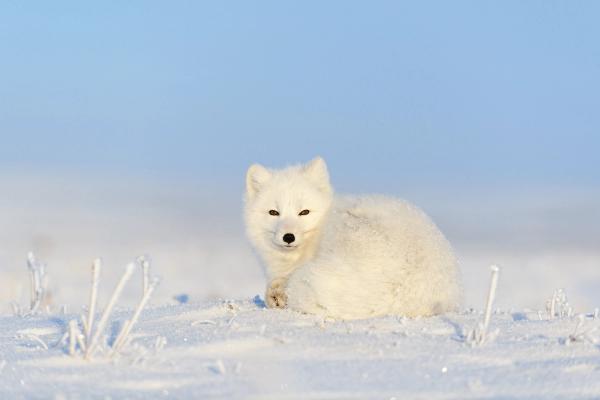
Reindeer
In the 18th century, reindeer were brought over from Norway for herding, which was a common practice in the Scandinavian countries. However, reindeer husbandry failed to take off in Iceland, which resulted in them roaming freely in the wild.
Approximately 3,000 reindeer reside in Iceland at the moment. Mostly in the east - around Snæfell, Brúaröræfi, and Vesturöræfi. You can find them in the lowlands and higher ground during the summer. Nevertheless, herds have been spotted as far north as Vopnafjörður and as far south as Jökulsárlón.
Although reindeer are well-loved across the country, their population is controlled so as not to encroach on grazing land set aside for sheep. Failure to do so may destabilize the economy in the case of a large-scale volcanic eruption or severe winter, which aren’t uncommon in Iceland.
Rendeer can be found at: Snæfell, Brúaröræfi, Vesturöræfi, Vopnafjörður and Jökulsárlón
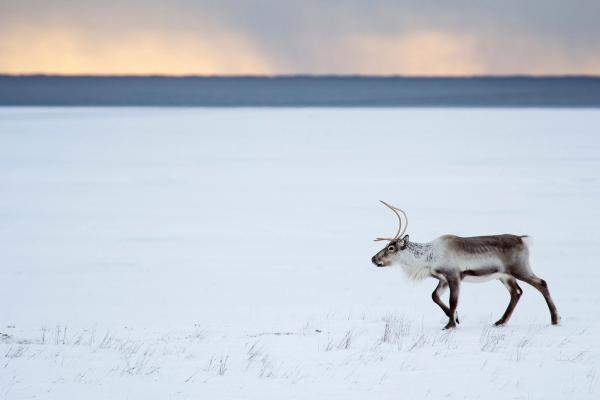
Marine Animals in Iceland
Iceland’s waters are home to all kinds of marine animals, from huge whales to curious dolphins and seals. With over twenty whale species and plenty of great spots to see them, it’s one of the best places in Europe for whale watching.
Here’s a look at some of the marine animals you might encounter.
Whales
Iceland’s waters are home to over twenty different whale species, no wonder the island is considered the whale-watching capital of Europe.
Species you’re most likely to see there are:
- Belugas
- Bowheads
- Minkes
- Narwhals
- Humpbacks
- Blues
- Sperms
In recent times, Icelanders’ views on these creatures have changed, as the relationship between the two was historically complex. Early settlers used to depict them as cruel leviathans.
We see this in a famous story of a warlock who transformed into a whale and then tried taking over Iceland before being rebuffed by a guardian spirit. Although feared in their natural environment, whales had a warm welcome when washed up to shore. Their meat was enough to feed the entire community, and their oil could supply lanterns and candles for the entire winter. In the 19th century, commercial whaling was legalized in Iceland but later outlawed, then legalized again.
Though it continues today, the constant debate about its future lingers. However, what does have a future is whale watching, which I'm sure you'll love.
To get a glimpse of the creatures for yourself, you can rent a car from the best car rental in Iceland and travel to Húsavík or Snæfellsnes peninsula to see them. You can get a close-up photo with humpbacks as they are curious creatures that love moving close to boats.
Whales can be found at: Húsavík and Snæfellsnes Peninsula
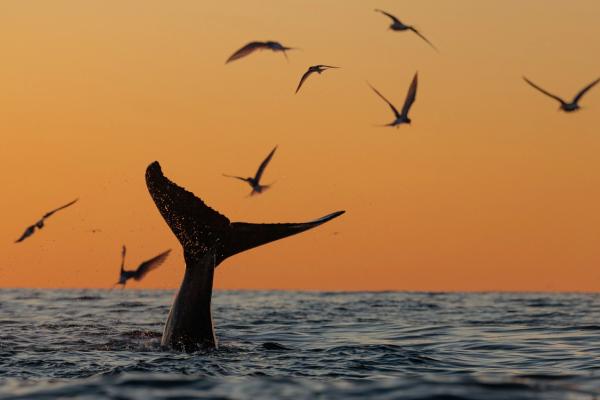
White-Beaked Dolphins
While on your whale-watching tour in the Snæfellsnes peninsula, you might see pods of white-beaked dolphins jumping in and out of the water. You’ll recognize them by the white or light grey stripes on their bellies and flanks.
The males have entirely white beaks, while only the tip of the beak is white for the females.
White-beaked dolphins often congregate in social groups consisting of related and unrelated members. You'll also find that the groups are of the same sex and age group. Currently, around 30,000 white-beaked dolphins are inhabiting Iceland's coasts. Their main source of food includes haddock, cod, and whiting.
White-Beaked Dolphins can be found at: Snæfellsnes Peninsula.
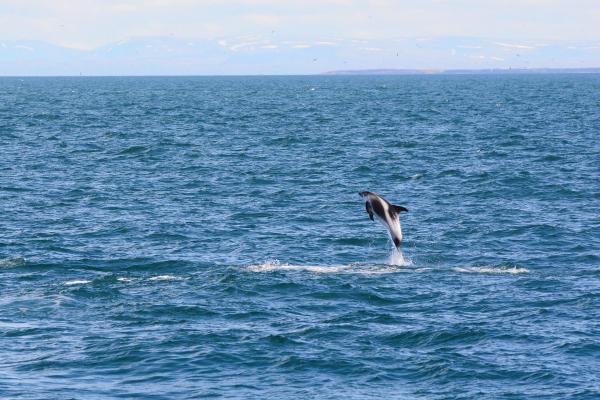
Seals
The third marine animal you'll find in Iceland is the seal, predominantly the harbor and gray colonies. For years, seals have been using Iceland's shores to breed, haul out, and shed. The uninhabited coast and fertile waters allowed seal colonies to evolve. When they arrived, the seal’s lack of fear of humans came as a blessing for them, as they provided the settlers with essential resources like food, oil, and clothing. That made the stark island much more habitable.
As more settlers came over, seal killings increased. In the 20th century, their population dropped as seals were now used primarily for fashion rather than necessity. However, their numbers are considerably stable today, even though they're still hunted for passing ringworms to fish, damaging fishing equipment, and for their fur.
As the seal-watching industry booms, these practices have come under heavy scrutiny, especially after the Icelandic Seal Center opened in Hvammstangi.
You can spot seals in various places in Iceland, like the Jökulsárlón glacier lagoon, the Westfjords, the Snæfellsnes peninsula, and Vatnsnes peninsular. Gray and harbor seals are not the only species to visit the Icelandic waters. Ringed, bearded, harp, and hooded seals often come by. You might even come across walruses in the Westfjords, which were plenty in the 17th century before being hunted to extinction.
Seals can be found at: Reykjavík, Hvammstangi, Snæfellsnes Peninsula, Vatnsnes Peninsula, Skagi Peninsula, Jökulsárlón Glacier Lagoon, Breidafiord Bay, Strandir Area and Myrar Area.

Domestic Animals in Iceland
Iceland has a few domestic animals that have been around for centuries, playing a big role in daily life. Some, like the Icelandic horse, are famous worldwide, while others, like sheep and sheepdogs, have been essential for survival in this harsh climate.
Here’s a look at some of the domestic animals you’ll see in Iceland.
The Icelandic Horse
One of the animals in Iceland you don’t want to miss out on is the Icelandic horse. This is one of the most renowned horse breeds globally – not because of its height, but its intelligence and purity.
Importing horses to Iceland is illegal, and if one is exported, it’s not allowed to return, which ensures Icelandic horses remain pure breeds. When early settlers came over from Norway, they brought their best horses along. In the year 920, when the settlement period ended, Iceland had several sturdy horses that played a critical role in the economy.
For years, they were used to help with the farm work. However, their unique gait (walking style) made people use them more for horse riding than the former.
You cannot have a complete Icelandic experience without riding an Icelandic horse. Plus, it won't take much time from your travel plans. Head over to Skagafjörður, in North Iceland, the mecca of horsemanship, to ride one. It’s a fantastic place to go sightseeing, snorkeling, or caving on a horse.
If you’re in the capital, I recommend horse-riding in Mosfellsdalur Valley, just outside Reykjavík.
Icelandic horse can be found at: Everywhere in Iceland
Icelandic Sheep
Though this inclusion may sound laughable to foreigners – it’s not to Icelanders, as it’s what kept us alive for centuries. Even today, Icelandic sheep continue to be a vital source of warmth and food.
You should read Nobel Prize winner Halldor Laxness’s novel to understand their reverence for locals. You’ll find that they are the central topic for most country folk.
While not as exciting as other animals on this list, their role in Iceland's history cannot be forgotten.
Icelandic Sheep can be found at: Everywhere in Iceland
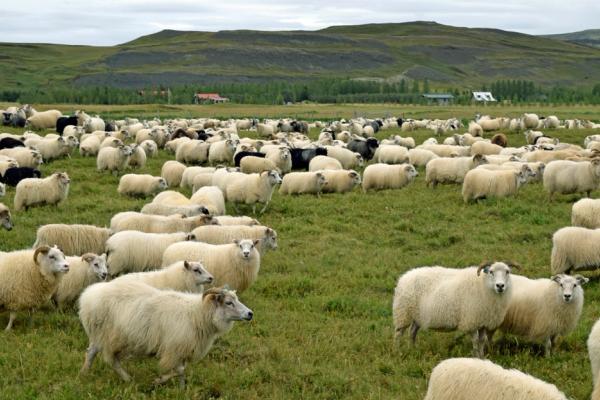
Icelandic Sheepdog
Like other domestic animals in Iceland, sheepdogs came with early settlers hundreds of years ago. Since then, they've helped farmers by guarding property and herding.
Icelandic sheepdogs are small compared to their counterparts abroad. Due to the island's isolation, they also catch diseases easily.
In the late 19th century, these pets almost faced extinction. The government intervened by banning other dog breeds from entering the country, introducing pet vaccines, and making veterinary care affordable, which helped the population recover.
Apart from the small size, Icelandic sheepdogs have curled tails and fluffy coats. They are also friendly, agile, highly energetic, and resilient, making them great exercise partners.
Most sheepdogs are found in the countryside, where they are free to use their natural herding instincts and high energy to help their owners.
Icelandic Sheepdog can be found at: Every farm in Iceland and in many households around Iceland.
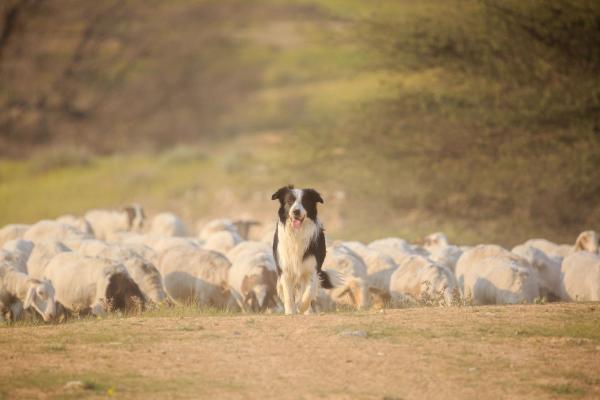
Birds in Iceland
Iceland has all kinds of birds, from tiny but feisty Arctic terns to powerful gyrfalcons and the famous puffins. You can see them everywhere: walking around Reykjavík, hiking in the highlands, or exploring the coast. Here’s a look at a few of the most interesting ones.
Arctic Tern
The Arctic tern is fiercely protective of its nest. This little white bird, with a blackhead and sharp, angular wings, will charge toward anyone who approaches its nest.
For this reason, you'll find signs indicating Arctic tern nests around ponds in the capital, where they love to hang around.
Make sure you don’t feed these birds when you meet them during the spring or summer, as that can attract predatory birds that can prey on ducklings at the pond.
Arctic Terns can be found in: Reykjavík

Gyrfalcon
Look up! You might see the majestic gyrfalcon circling above you. The bird has a wingspan of up to 4 feet (1.2 m), making it the largest of the falcon group. It’s also fast and powerful, which is probably why it’s the national animal for Iceland.
The gyr has grey and white feathers and is considered the most beautiful falcon by many. You can find some in North Iceland around the Lake Mývatn area. While there, you might see a gyrfalcon diving into the lake to catch dinner, so be ready with your camera.
Gryfalcons can be found at: Lake Mývatn Area
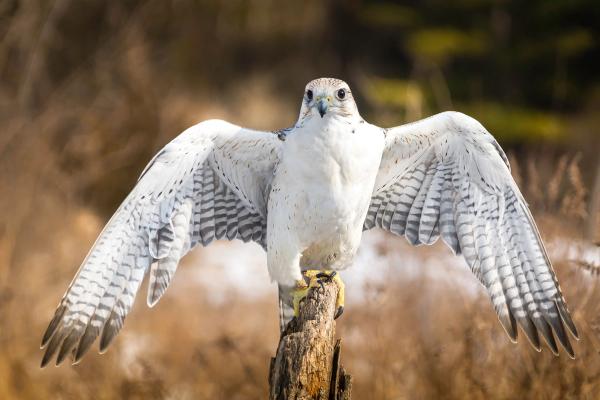
Puffins
60% of the world's Atlantic puffin population resides in Iceland. That's approximately 10 million birds! So you’re sure to see them in thousands of places around the country.
The south of Iceland is home to various puffin colonies, such as Reynisfjall and Dyrholaey. Going there allows you to experience the exquisite nature of the south coast while viewing the birds in their natural habitat.
If you’re a bird enthusiast, heading to the Westfjords will give you the most pleasure, as it’s a bird-watching paradise. The remote setting of the Westfjords allows thousands of birds to take refuge there, lay eggs, and raise their young ones without fear of predators.
Birds there aren’t fond of humans, so when you arrive at the Látrabjarg bird cliffs, stand a respectable distance away, so you don’t startle them.
You can also appreciate puffins while on a boat tour in Lundy or Akurey or just by the bay, where you’ll find thousands of nests. Icelanders eat puffins. That means you might be watching them during the day and eating them during the night.
Puffins can be found at: Látrabjarg and the Westman Islands.

What's Iceland's National Animal?
Iceland's national animal is the Gyrfalcon - a powerful bird of prey that perfectly matches the country's wild spirit. While it's not officially designated by law, most Icelanders consider it their national symbol.
This impressive bird showed up on Iceland's coat of arms from 1903 to 1919, when the Danish king decided it should replace the boring old cod. Even though it's not on the official emblem anymore, the bird's importance lives on through Iceland's highest honor - the Order of the Icelandic Falcon.
These birds are massive! Their wings stretch over 4 feet wide. You'll find them hanging out in Iceland's remote coastal cliffs. Back in the day, these falcons were super valuable - kings and nobles would trade them like luxury sports cars, which made Iceland pretty famous as the place to get the best hunting birds.
Want to spot one? Head to northern Iceland, but don't get your hopes too high - they're pretty rare. Pack some binoculars and join a wildlife tour for your best shot at seeing this national icon doing its thing in the wild.
Conclusion
Iceland doesn’t have a ton of wildlife, but the animals here are interesting. Arctic foxes live in the Westfjords, reindeer roam the east, and the ocean is full of whales, seals, and dolphins. Even farm animals like Icelandic horses and sheep are a big part of life here. Bird lovers can spot puffins, Arctic terns, and gyrfalcons. No matter where you go, there’s always some kind of wildlife around.
